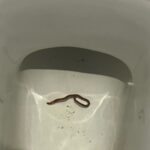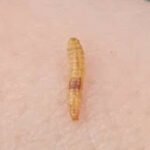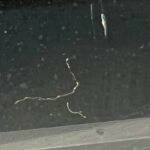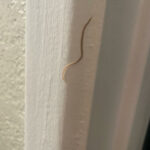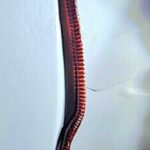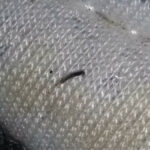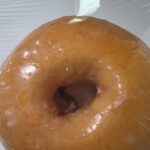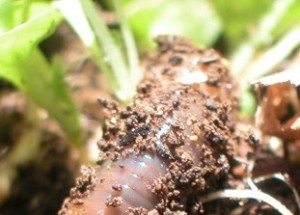Some slim soil dwellers or plump tree climbers may look like worms, but there are a number of characteristics that will set them apart from worms. These characteristics are both habitual and physical. For starters, caterpillars like to crawl on objects like branches, ropes, and wires, while worms prefer to burrow into and tunnel in and out of soil. Next, caterpillars do not have the same body movements as worms. Caterpillars have multiple legs which enable them to crawl and climb like no other climbing herbivore on the planet. Worm movements are peristaltic, meaning, they move about through muscle contractions. Caterpillars use passive grip to tackle the most complex objects, bending, twisting, and crumpling their way up, down, and around these objects.
Worms and caterpillars are not the only worm-like creatures that have differences, however. Some people are quick to confuse centipedes and millipedes with worms. The obvious differences between worms and centipedes and millipedes is the fast movement of these leggy creatures and the thousands of tiny legs attached to the body. So, if you have spotted a worm-like creature, the best thing to do is rule out that it is a worm first and take it from there as there are too many creatures on the planet to identify and name here.
There are more than 2,700 species of earthworm alone. So, when attempting to identify a worm or worm-like creature, there are several important steps that should be taken in order to identify them correctly. First, you should become familiar with the key characteristics used for identifying worms. Just a few of the characteristics used to identify earthworms include: Genital tumescene (GT), the Tubercula pubertatis (TP), and the Clitellum.
The clitellum of adult earthworms contains features called genital tumescence, and tubercula pubertatis. The clitellum features, the male pores, and female pores are found above the clitellum and are all parts of the earthworm reproductive system. The earthworm also has “setae” which are tiny hair-like projections that are arranged in rows along the earthworm body. The setae are used are used for locomotion by the earthworm. The prostomium is the earthworm mouth. The size, shape, and position of the different characteristics of the worm are different in different species of earthworms and will help you to identify the species of earthworms you may be dealing with.
After you have become familiar with earthworm characteristics, you should become familiar with the characteristics of earthworms that indicate which ecological group they belong to. There are three broad ecological groups that have been identified for earthworms including: epigeic, endogeic, and anecic. The groups are based on what the earthworms eat and where they tend to live in the soil. The epigeic group is a litter feeder, litter dweller, pigmented, small in size, and it doesn’t burrow. The endogeic group consists of rich soil feeders, topsoil dwellers, has no pigmentation, burrows horizontally, and it is small in size. The anecic consists of litter and soil feeders, soil dwellers, dorsally pigmented bodies, extensive vertical burrows, and a large size. Size and color are usually good distinguishers for adult earthworms.
For more information about identifying worms, you can download an online identification key for earthworms by clicking here to visit The Backyard Nature websites’ key or to access an online field guide to earthworms, click here.
All About Worms is always free, always reader-supported. Your tips via CashApp, Venmo, or Paypal are appreciated! Receipts will come from ISIPP Publishing.



